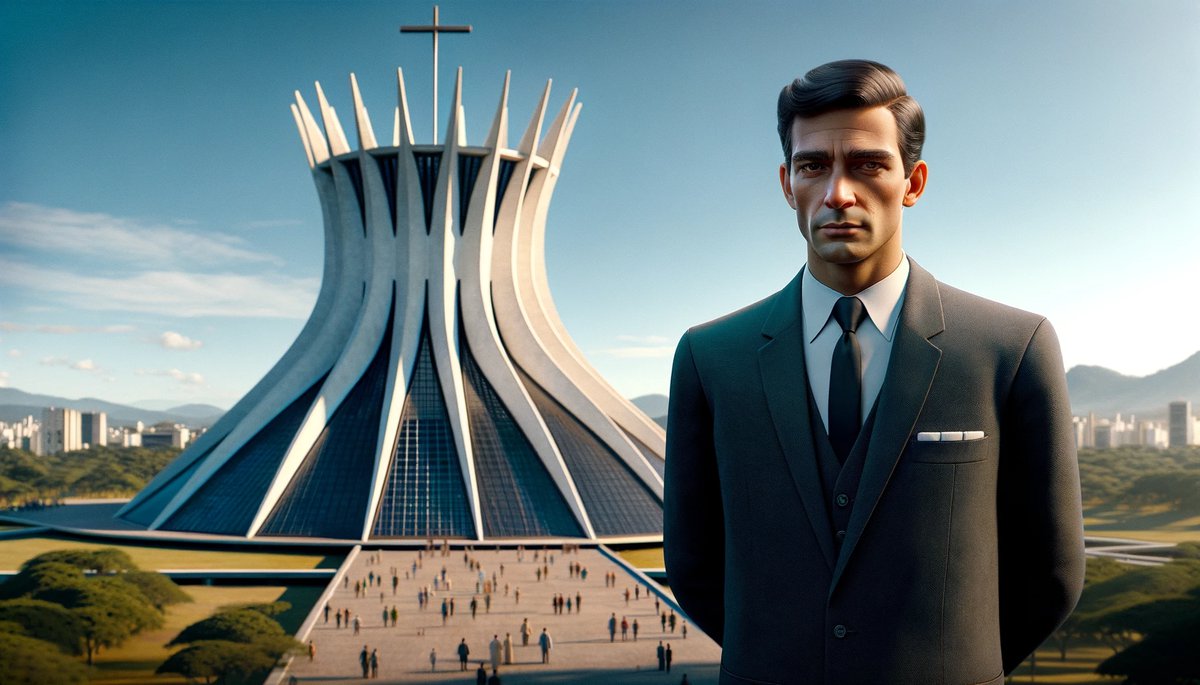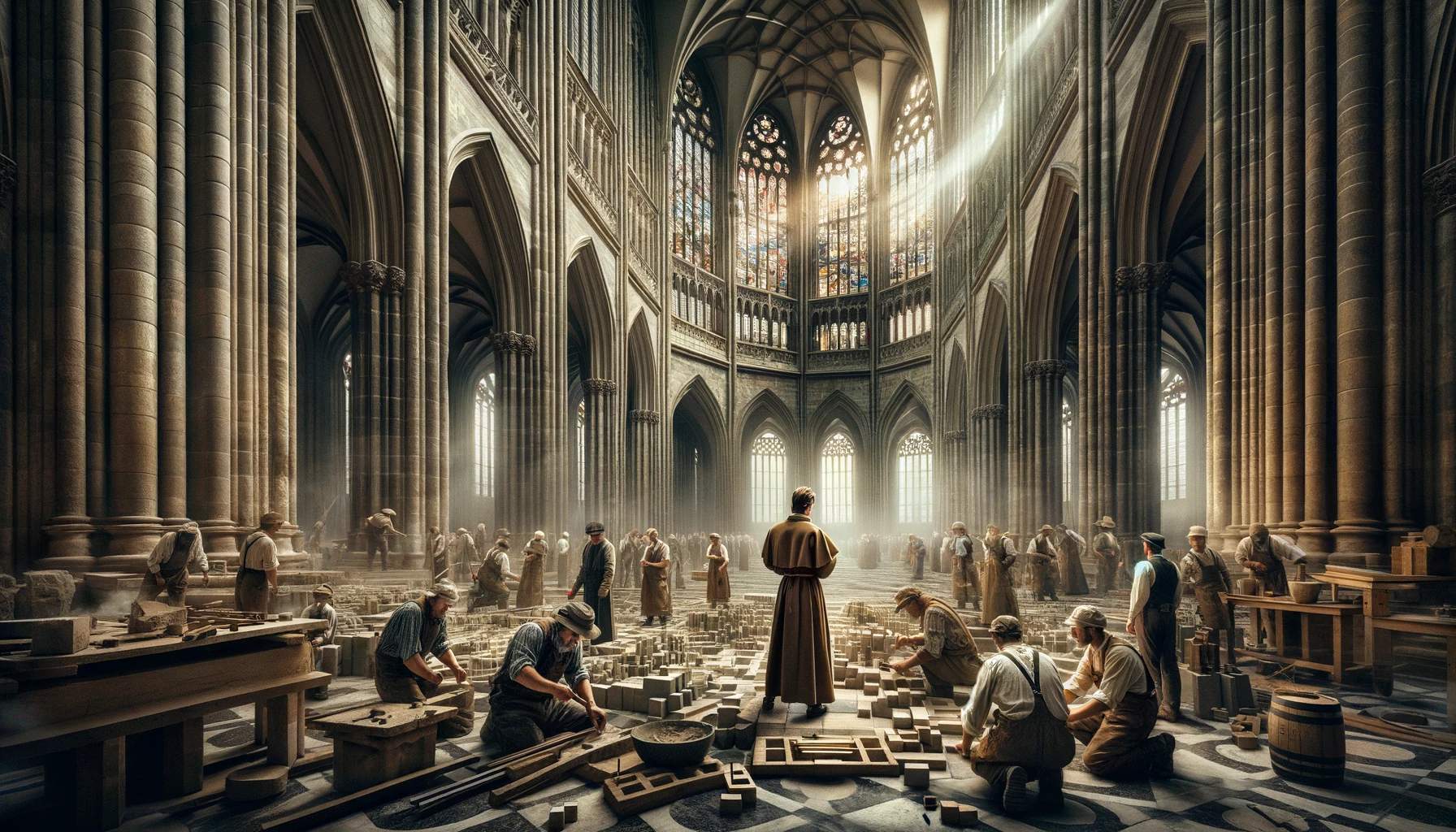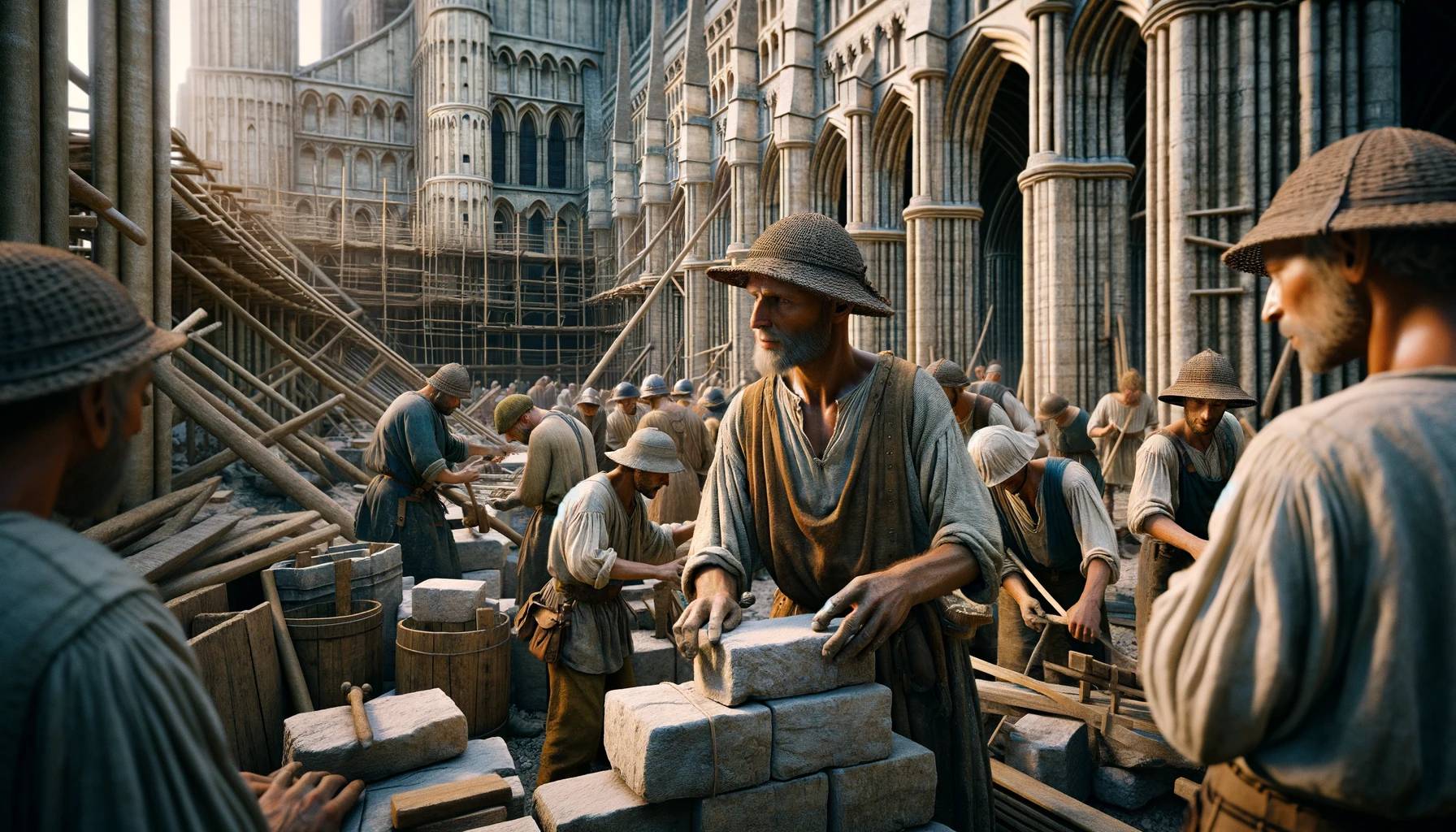Home>Arts and Culture>Who Built The Cologne Cathedral


Arts and Culture
Who Built The Cologne Cathedral
Published: February 16, 2024
Ericka Andersen, an editor at Christian.net, expertly merges digital strategy with content creation, focusing on faith and societal issues. Her communication skills enhance the platform's engaging narratives, fostering meaningful dialogue on belief's impact on society.
Discover the fascinating history and architectural marvels of the Cologne Cathedral, a masterpiece of arts and culture that has stood the test of time. Learn about the skilled craftsmen and visionaries who built this iconic symbol of German heritage.
(Many of the links in this article redirect to a specific reviewed product. Your purchase of these products through affiliate links helps to generate commission for Christian.net, at no extra cost. Learn more)
Table of Contents
Introduction
The Cologne Cathedral, a majestic architectural marvel that has stood the test of time, is a symbol of human ingenuity and devotion. Its towering spires and intricate façade draw millions of visitors each year, captivating them with its grandeur and spiritual significance. This iconic structure, located in the heart of Cologne, Germany, is not merely a testament to medieval craftsmanship but also a living testament to the enduring power of faith and perseverance.
The history of the Cologne Cathedral is a tapestry woven with threads of ambition, tragedy, and triumph. Its construction spans centuries, reflecting the unwavering dedication of generations of builders and artisans. The cathedral's significance extends beyond its physical presence, as it embodies the collective spirit of a community and the resilience of the human spirit.
As we delve into the story of the Cologne Cathedral, we will unravel the mysteries and triumphs that have shaped this architectural wonder. From its early origins to the master builders who brought it to life, each chapter of its history is a testament to the enduring legacy of human creativity and determination. Join us on a journey through time and craftsmanship as we explore the captivating tale of the Cologne Cathedral.
Read more: When Was Cologne Cathedral Built
Early History of the Cologne Cathedral
The early history of the Cologne Cathedral is shrouded in the mists of time, with its origins dating back to the 4th century. Legend has it that the cathedral houses the relics of the Three Wise Men, making it a site of pilgrimage and reverence. The story begins with the Roman Governor of Gaul, Maternus, who is said to have brought the remains of the Magi to Cologne in 1164, bestowing upon the city a sacred and revered treasure.
The construction of the cathedral was not a linear process but rather a series of starts and stops, influenced by political, social, and economic factors. The earliest phase of the cathedral's construction can be traced back to the 9th century when a modest church was erected on the site. However, it was not until the 13th century that the grand vision of a Gothic cathedral began to take shape.
The foundation stone was laid in 1248, marking the official commencement of the cathedral's construction. The initial plans aimed to create a structure that would surpass all others in grandeur and scale, reflecting the aspirations of the city and its inhabitants. However, the path to completion was fraught with challenges, including financial constraints, political upheavals, and the Black Death, which cast a shadow of uncertainty over the project.
Despite these obstacles, the cathedral gradually rose from the ground, a testament to the unwavering determination of the builders and the steadfast faith of the community. Each stone laid and each arch erected bore witness to the resilience and resilience of the human spirit, transcending the passage of time and leaving an indelible mark on the city's skyline.
The early history of the Cologne Cathedral is a narrative of ambition, setbacks, and resilience, reflecting the ebb and flow of human endeavor. It serves as a reminder of the enduring power of vision and determination, inspiring awe and reverence in all who gaze upon its magnificent façade. As we continue our exploration of this architectural masterpiece, we will uncover the remarkable stories and individuals who shaped its destiny, leaving an indelible imprint on the annals of history.
Construction of the Cathedral
The construction of the Cologne Cathedral stands as a testament to human perseverance and unwavering dedication. The ambitious vision of creating a Gothic masterpiece that would surpass all others in grandeur and scale was met with formidable challenges and setbacks. The foundation stone was laid in 1248, marking the official commencement of what would become a monumental endeavor.
The cathedral's construction was a laborious and protracted process, spanning over six centuries. The initial phase saw the erection of the choir and the transept, showcasing the early Gothic style that would come to define the cathedral's architectural identity. However, progress was hindered by financial constraints and the shifting tides of political and social upheaval.
Amidst these challenges, the cathedral became a symbol of resilience and determination, as each generation of builders and artisans contributed to its gradual ascent. The soaring nave and the awe-inspiring façade began to take shape, bearing witness to the unwavering commitment of the community to see the project through to its fruition.
The cathedral's construction was not without its share of setbacks. The Black Death, which ravaged Europe in the 14th century, cast a shadow of uncertainty over the project, leading to a temporary halt in construction. However, the indomitable spirit of the builders prevailed, and work resumed, driven by an unyielding determination to see the cathedral rise to its full glory.
The completion of the Cologne Cathedral in 1880 marked the culmination of centuries of toil and dedication. The twin spires, reaching towards the heavens, stood as a testament to the collective vision and unwavering faith that propelled the cathedral's construction forward. The intricate details adorning the façade and the majestic interior spoke volumes of the craftsmanship and artistry that went into its creation.
The construction of the Cologne Cathedral stands as a testament to the enduring power of human ambition and perseverance. It is a living testament to the resilience of the human spirit, transcending the passage of time and leaving an indelible mark on the city's skyline. As we continue our exploration of this architectural masterpiece, we will delve into the intricate details and architectural features that make the Cologne Cathedral a timeless symbol of human creativity and devotion.
Architectural Features of the Cathedral
The Cologne Cathedral stands as a paragon of Gothic architecture, boasting a myriad of awe-inspiring features that have captivated visitors for centuries. Its imposing façade, adorned with intricate sculptures and delicate tracery, serves as a testament to the ingenuity and artistry of its creators. As we step into the realm of architectural marvels, we are greeted by a symphony of stone and light, each element harmonizing to create an unparalleled sensory experience.
The cathedral's soaring twin spires, reaching a height of 157 meters, dominate the skyline, beckoning admirers to gaze in wonder at their ethereal beauty. These spires, with their delicate openwork design, exemplify the Gothic penchant for verticality and aspiration towards the divine. As the sunlight filters through the stained glass windows, casting a kaleidoscope of colors upon the interior, the cathedral becomes a sanctuary of light and shadow, evoking a sense of transcendence and reverence.
The intricate details adorning the façade are a testament to the skill and dedication of the artisans who brought the cathedral to life. The west front, adorned with countless sculptures and reliefs, depicts scenes from the Bible and the lives of saints, inviting visitors to embark on a visual journey through sacred narratives. The delicate tracery of the windows, crafted with meticulous precision, allows the play of light and shadow to dance across the interior, creating an atmosphere of ethereal beauty and contemplation.
Stepping inside, one is enveloped by the grandeur of the nave, with its soaring vaults and majestic columns reaching towards the heavens. The stained glass windows, dating from different periods, bathe the interior in a celestial glow, infusing the space with a sense of otherworldly splendor. The choir, adorned with intricate wood carvings and delicate stonework, serves as a testament to the fusion of art and faith, creating a space that transcends the boundaries of the earthly realm.
The architectural features of the Cologne Cathedral are a testament to the enduring legacy of Gothic craftsmanship and the unwavering devotion of its creators. Each element, from the soaring spires to the delicate tracery, weaves a narrative of human creativity and spiritual aspiration, inviting visitors to embark on a journey through time and beauty. As we stand in awe of this architectural masterpiece, we are reminded of the timeless power of art to elevate the human spirit and inspire wonder in the hearts of all who behold it.
The Master Builders
The creation of the Cologne Cathedral was not solely the work of a single generation but rather a collective endeavor spanning centuries. The master builders who shepherded this monumental project possessed a rare combination of vision, skill, and unwavering dedication, leaving an indelible mark on the cathedral's legacy.
One of the most renowned figures in the cathedral's history is Master Gerhard, the chief architect responsible for overseeing the early phases of construction. His innovative design and meticulous attention to detail laid the groundwork for the cathedral's distinctive Gothic style, setting a precedent for generations of builders to follow. Master Gerhard's vision and expertise shaped the cathedral's architectural identity, leaving an enduring legacy that continues to inspire awe and admiration.
As the cathedral's construction progressed, a succession of master builders took up the mantle, each contributing their unique talents and insights to the evolving structure. Master Arnold, known for his mastery of stone carving, infused the cathedral with intricate sculptures and ornate details, breathing life into its façade and interior. His craftsmanship and artistry elevated the cathedral to new heights of splendor, captivating all who beheld its grandeur.
The tenure of Master Michael, a visionary architect and engineer, marked a pivotal phase in the cathedral's construction. His innovative techniques and structural advancements propelled the project forward, overcoming formidable challenges and ushering in a new era of progress. Master Michael's contributions laid the groundwork for the cathedral's completion, solidifying its status as a crowning achievement of Gothic architecture.
The legacy of the master builders extends beyond their technical prowess, encompassing a deep sense of devotion and reverence for their craft. Their unwavering commitment to realizing the cathedral's grand vision, despite the adversities they faced, reflects the enduring power of human determination and creativity. Each master builder, with their distinct expertise and unwavering dedication, contributed to the cathedral's evolution, leaving an indelible imprint on its storied history.
The Cologne Cathedral stands as a testament to the collective genius and perseverance of these master builders, whose names may have faded into obscurity but whose legacy endures in the soaring spires and intricate details of this architectural masterpiece. Their contributions, spanning centuries, embody the timeless spirit of human creativity and the enduring pursuit of excellence, ensuring that their legacy lives on in the heart of this iconic structure.
Read more: Who Built The Lincoln Cathedral
Conclusion
In conclusion, the Cologne Cathedral stands as a testament to the enduring legacy of human creativity, determination, and spiritual aspiration. From its humble beginnings in the 4th century to its completion in 1880, the cathedral's story is a tapestry woven with threads of ambition, setbacks, and triumphs. Its soaring spires, intricate façade, and awe-inspiring interior bear witness to the unwavering dedication of generations of builders and artisans who labored to bring this architectural marvel to life.
The early history of the cathedral, steeped in legend and reverence, sets the stage for a narrative that spans centuries. The construction of the cathedral, marked by starts and stops, reflects the ebb and flow of human endeavor, overcoming challenges such as financial constraints, political upheavals, and the shadow of the Black Death. Despite these obstacles, the cathedral gradually rose from the ground, a testament to the resilience and steadfast faith of the community.
The architectural features of the Cologne Cathedral, characterized by Gothic grandeur and intricate details, invite visitors to embark on a journey through time and beauty. The soaring spires, delicate tracery, and celestial glow of the stained glass windows create an atmosphere of transcendence and reverence, elevating the cathedral to a realm of ethereal splendor.
The master builders, from Master Gerhard to Master Arnold and Master Michael, each contributed their unique talents and unwavering dedication to the cathedral's evolution. Their vision, skill, and devotion left an indelible mark on the cathedral's legacy, shaping its architectural identity and inspiring awe and admiration for generations to come.
As we stand in awe of this architectural masterpiece, we are reminded of the timeless power of art to elevate the human spirit and inspire wonder in the hearts of all who behold it. The Cologne Cathedral, with its rich history and enduring significance, serves as a beacon of human ingenuity and devotion, inviting visitors to immerse themselves in a legacy that transcends the passage of time.
In the heart of Cologne, Germany, the cathedral stands as a living testament to the resilience of the human spirit and the enduring pursuit of excellence. Its grandeur and spiritual significance continue to captivate visitors, inviting them to partake in a journey through history, art, and faith. The Cologne Cathedral, with its timeless allure and profound symbolism, remains a testament to the enduring legacy of human creativity and devotion, inspiring awe and reverence in all who gaze upon its magnificent façade.














